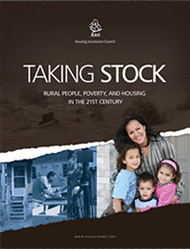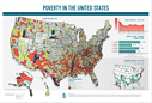
RURAL DATA PORTAL - FREQUENTLY ASKED QUESTONS
FAQ
- How do you define “rural” (and suburban, and urban) in the Data Portal?
- What is the Data Reliability estimate, and how is "reliable" calculated?
- Why aren't there reliability estimates for national or state level data?
- Does a low (red) reliability code mean that the data should not be used?
- Can I find data for a town or city in the Rural Data Portal?
- Why do some population figures, (total population, race, and age) use 2010 decennial Census data, while other social characteristics (education, marital status, etc.) use American Community Survey (ACS) data?
- Why do some population estimates from the Census 2010 differ from the ACS 2006-2010 population figures?
- Why does the Rural Data Portal use ACS's five-year estimates and not the single-year estimates?
- Why are there no separate small town and rural, suburban and exurban, and urban estimates for county measures?
- Does the Home Mortgage Disclosure Act (HMDA) data in the Portal cover all home loans?
- Why do unemployment numbers in the Rural Data Portal vary from current unemployment data?
- Will the Rural Data Portal be updated, and how often?
Q. How do you define “rural” (and suburban, and urban) in the Data Portal?
There are many different definitions used to classify rural areas and populations. For the Rural Data Portal, The Housing Assistance Council (HAC) incorporates a specific definition to present data for rural & small town, suburban and exurban, and urban areas. These classifications are largely based on a measure of housing density (housing units per square mile) and commuting. It is important to note that the definition of rural and small town areas in the Rural Data Portal are NOT the same as OMB Outside Metropolitan Area, or Census defined Rural Area classifications. For more information about defining rural in the Data Portal please consult: About the Data
Q. What is the Data Reliability estimate, and how is “reliable” calculated?
HAC’s Rural Data Portal presents a reliability index to help users determine the statistical accuracy of data estimates presented from the Census Bureau’s American Community Survey (ACS). The Portal’s reliability index utilizes a coefficient of variation (CV) calculated for each county-level estimate presented from ACS data.
The Reliability Index for the Rural Data Portal is presented below:
Green = High Reliability Estimate – Coefficient of Variation (CV) less than 15 percent
Yellow = Reliable Estimate – Coefficient of Variation (CV) between 15 percent and 29.9 percent
Red = Low Reliability Estimate - Coefficient of Variation (CV) 30 percent or higher. Use caution when referring to or presenting this estimate. Please consult the Census Bureau for more information and guidance.
Gray = Reliability Estimate Not Available
For more information about reliability estimates in the Rural Data Portal please consult, About the Data
Q. Why aren’t there reliability estimates for national or state level data?
Reliability estimates in the Rural Data Portal are only presented for county level data that derive from American Community Survey (ACS) data. Generally, ACS survey samples are large enough at higher levels of geography (nation and state) that data estimates are largely reliable. Reliability estimates are also not presented for county level data from the 2010 Census of Population Housing and 2010 Home Mortgage Disclosure Act (HMDA) data. These data sources do not permit the calculation of a reliability estimate.
Q. Does a low (red) reliability code mean that the data should not be used?
No. A low (red) reliability indicator is essentially a caution as well as a suggestion to review the data estimate more closely. For estimates with a red reliability code (or high coefficient of variation), we advise that users consult the Census website and review the specific margin of error to make a determination on whether or not to use these data.
Q. Can I find data for a town or city in the Rural Data Portal?
No. The Rural Data Portal only provides information at three geographic levels (1) nation, (2) states, and, (3) counties. For information and data on cities, towns, and other geographies, please consult the Census Bureau’s American Fact Finder, http://factfinder2.census.gov/faces/nav/jsf/pages/index.xhtml.
Q. Why do some population figures, (total population, race, and age) use 2010 decennial Census data, while other social characteristics (education, marital status, etc.) use American Community Survey (ACS) data?
The Rural Data Portal uses Census 2010 data where possible as these data reflect actual counts and not estimates. However, Census 2010 does not provide extensive social characteristics data. The ACS five-year estimates provide additional information to inform social, economic, and housing indicators in the Rural Data Portal.
Q. Why do some population estimates from the Census 2010 differ from the ACS 2006-2010 population figures?
The Census 2010 provides an actual count of population and housing units on April 1, 2010, while the ACS provides an estimate that spans a five-year period. The estimate using data from multiple years before 2010 should be expected to create slightly different counts from decennial census “point in time” figures.
Q. Why does the Rural Data Portal use ACS’s five-year estimates and not the single-year estimates?
Only ACS’s five-year estimates provide data for all geographies. For example, the Data Portal would not contain estimates for small, rural counties with fewer than 65,000 residents if ACS one-year estimates were consulted.
Q. Why are there no separate small town and rural, suburban and exurban, and urban estimates for county measures?
In many cases, estimates made at sub-county geographic levels involve very small populations. As a result, these sub county level estimates may lack enough precision and information for statistically reliability.
Q. Does the Home Mortgage Disclosure Act (HMDA) data in the Portal cover all home loans?
While HMDA data are a critical resource to understanding lending trends, the limitations of these data in rural areas must be acknowledged. Only those financial institutions with assets of $39 million or more that were headquartered in a metropolitan area were required to report HMDA data in 2010. Consequently, an undetermined number of rural lending data are unavailable, as many small rural financial institutions are not required to report lending information. Despite these limitations, HMDA provides the best available information on rural lending. For detailed information about the Federal Financial Institutions Examination Council (FFIEC) Home Mortgage Disclosure Act data used in this database please consult, Home Mortgage Disclosure Act: About the Data. http://www.ffiec.gov/hmda/about.htm.
Q. Why do unemployment numbers in the Rural Data Portal vary from current unemployment data?
The unemployment data provided in the data portal is based on the ACS 2006-2010 five-year estimates. The proportion of residents unemployed will most likely vary from the monthly estimates generated by the Bureau of Labor Statistics (BLS). If a current unemployment rate or figure is needed, the Bureau of Labor Statistic’s Local Area Unemployment Statistics (LAUS) should be consulted. The BLS LAUS program produces monthly and annual employment, unemployment, and labor force data for Census regions and divisions, states, counties, metropolitan areas, and many cities. For detailed information about the Bureau of Labor Statistic’s Local Area Unemployment Statistics data used in this database, please consult the Bureau’s report, LAUS Estimation Methodology. http://www.bls.gov/lau/laumthd.htm
Q. Will the Rural Data Portal be updated, and how often?
The information in the Rural Data Portal will be updated when new data are available. There will be at least two updates annually. HAC will keep the Rural Data Portal as up to date and current as possible, but we cannot provide specific dates on when updates will occur.
Help/FAQ
For a detailed analysis
of rural housing conditions download
HAC'S TAKING STOCK Report & Maps

Download Entire Report
Download By Section
National ConditionsRegional Analysis Appendices
Download Maps:
 Poverty in the United States
Poverty in the United States